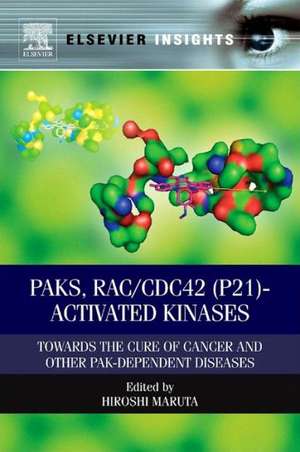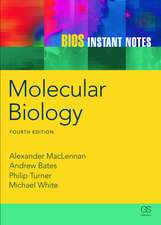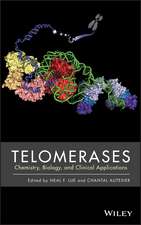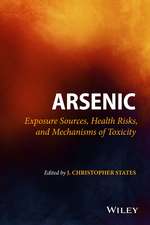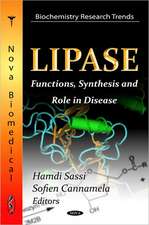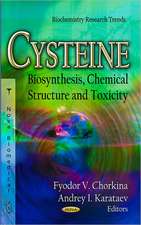PAKs, RAC/CDC42 (p21)-activated Kinases: Towards the Cure of Cancer and Other PAK-dependent Diseases
Editat de Hiroshi Marutaen Limba Engleză Hardback – feb 2013
- This publication will be the very first book ever published solely focused on PAK family kinases
- Each chapter deals with the latest progress in PAK research written by a leading PAK expert with his or her own ideas and insight
- Each chapter of this book has been written in such a way that clinical doctors who seek the effective cure of these formidable diseases, in addition to research scientists and biomedical students will value this book
- This book describes in detail a number of PAK blockers which would be potentially useful for the therapy of these PAK-dependent diseases, and some of them are indeed available on the market inexpensively, without any side effect
Preț: 585.27 lei
Preț vechi: 760.08 lei
-23% Nou
Puncte Express: 878
Preț estimativ în valută:
112.01€ • 116.50$ • 92.47£
112.01€ • 116.50$ • 92.47£
Carte tipărită la comandă
Livrare economică 14-28 aprilie
Preluare comenzi: 021 569.72.76
Specificații
ISBN-13: 9780124071988
ISBN-10: 0124071988
Pagini: 276
Dimensiuni: 152 x 229 x 11 mm
Greutate: 0.41 kg
Editura: ELSEVIER SCIENCE
ISBN-10: 0124071988
Pagini: 276
Dimensiuni: 152 x 229 x 11 mm
Greutate: 0.41 kg
Editura: ELSEVIER SCIENCE
Public țintă
This book will be of interest to pharmaceutical scientists and other biomedical research scientists, clinical doctors and even patients who suffer from PAK-dependent diseases.Cuprins
1. Functional Maturation of PAKs2. Oncogenicity of PAKs and Their Substrates3. Natural or Synthetic Therapeutics that Block PAKs4. PAK1 in Parasites-Host Interaction5. PAK1 in Brain Diseases6. PAK1 in Alzheimer’s and Huntington’s diseases7. PAK1 Controls the Lifespan8. PAK 4-6 in Cancer and Neuronal Development
Recenzii
"Here neurologists and other biomedical researchers explain in some detail how PAKs — particularly the oncogenic kinases PAK1 and PAK4 and their blockers — may control various aspects of life and health, and how mammalian PAKs have functionally evolved from their ancestral origins in unicellular organisms such as yeast and amoebas through a series of mutations over millions of years." --Reference and Research Book News, August 2013
